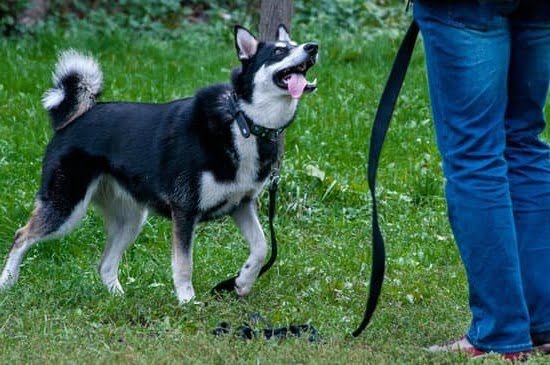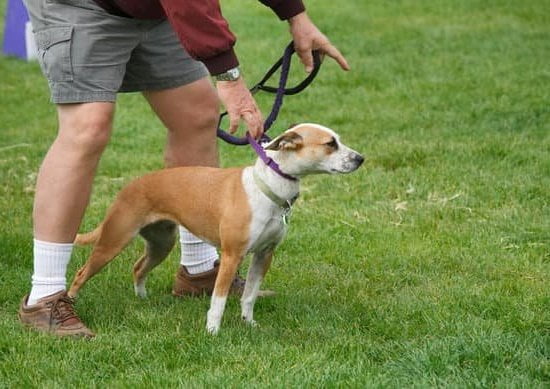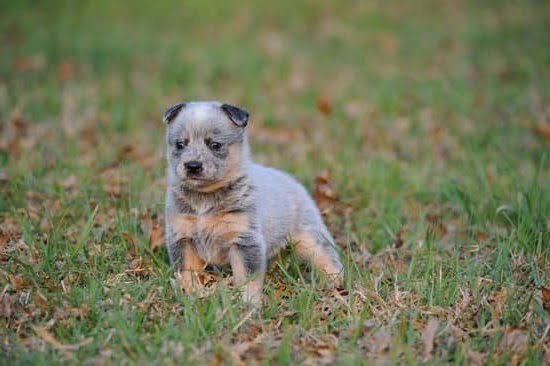Introduction
Search and rescue dog training is a process of teaching dogs to search and track in a variety of settings. This can include urban and wilderness settings, both on-leash and off-leash maneuvers. The goal of search and rescue dog training is to equip the dog with abilities to be able to track objects, people or animals, in order to aid in response times during any real life emergency scenarios. This type of training requires that the trainer be well informed about canine behavior as well as trained in specific techniques that are used to teach obedience and tracking skills. Some also specialize in search and rescue dog training, which focuses primarily on searching for lost individuals or items.
Reasons for Training a Dog for Search and Rescue
Search and rescue (SAR) dogs are indispensable to authorities performing rescues in difficult terrain or after severe events such as earthquakes, landslides, and collapse of buildings. These special dogs are trained to locate survivors amidst the rubble and take part in rescues when humans can’t.
There are many reasons why one should consider training a dog for SAR. Firstly, these highly skilled dogs possess an incredible sense of smell that allows them to detect human scent from long distances and under various types of challenging circumstances. Traditionally, these dogs have been utilized for locating missing persons across land, snow, water, and even caves with an impressive level of success – making them invaluable assets during missions involving complicated scenarios.
Additionally, SAR training helps minimize the risk posed to human searchers by allowing dog handlers to inspect hazardous areas from an increased distance or outside of sliding collapses and other disasters safely while able to receive quick feedback on whether a victim is present or not.
Furthermore, this type of training also ensures that specialized emergency response teams maintain up-to-date capabilities as needed at all times so they can respond effectively in times of need; this includes retraining programs allowing for individual canine teams being sent on periodic refreshers courses for specific dog breeds who have lost their natural interest in search activities due to retirement or downtime between missions.
Selecting the Right Breed for Search and Rescue
Not all dog breeds are suited for search and rescue work. Some are better than others because of their size, intelligence, personality, and even the unique physical characteristics necessary for the job. For instance, larger breeds such as German Shepherds and Labrador Retrievers have an advantage in terms of strength and speed, so they’re great candidates for search and rescue. Breeds like Golden Retrievers or Beagles offer good endurance and an excellent sense of smell that lends themselves well to tracking scents over long distances. Whatever breed best suits your needs, it’s important that the pup is well-trained with high activity levels and able to respond effectively to directions. When selecting a breed for search and rescue work, evaluate whether a particular breed offers the qualities needed—good house manners when indoors, engaging ability to stay focused outside during playtime or training sessions, plus must have an innate ‘drive’ which makes them excited about going outdoors.
In addition to selecting the right breed for search and rescue work, appropriate socialization is equally important. The pup should be exposed to different environments at an early age including other dogs and people from a broad range of backgrounds. Allowing them to experience these situations will help them form positive associations since comfort in various scenarios is key to success in their line of work; from exploring an unfamiliar office building interior or trail differences between mountain terrain or city streets! Formal obedience classes with certified trainers can also be beneficial for further developing recall commands, sit/stay behaviors and leash walking skills. Finally reward your pup frequently with treats when they complete tasks correctly as this can help condition them positively throughout their training process!
What to Look for When Choosing a Search and Rescue Dog
When it comes to training a dog for search and rescue, an important factor to consider is the breed. Different breeds of dog have different characteristics that make them better or worse suited for certain types of tasks. For example, Labrador Retrievers are known as great all-around dogs who can excel in agility, obedience, tracking, and even in search and rescue work. German Shepherds and Belgian Malinois tend to be great choices due to their intelligence and working ability. The breed should also be suitable for the environment where they will perform their tasks such as swimming capabilities or resilience against cold temperatures.
In addition to choosing the right breed, there are other factors you should look for when deciding if a dog is well-suited for search and rescue training. Training operates best with motivation so desirable qualities in a search and rescue dog include eagerness to learn new things, a strong desire to please people, problem solving skills, loyalty and protectiveness of people, the ability focus despite distractions in the surrounding environment and confidence when meeting new people or exploring unknown areas. In addition physical traits such as size and physical strength should be considered depending on the type of terrain of the area being searched; larger breeds may be preferable if that specific SAR mission involves rugged conditions or hazardous obstacles like fallen trees or steep hillsides. Lastly age can play a role; while puppies may behave unpredictably due to lack of experience it is advantageous if they’re young enough there’s still plenty of energy yet mature enough to support productive learning sessions with its handler.
Evaluating Your Search and Rescue Dog Candidate
It is important to evaluate your potential search and rescue dog before any training begins. This evaluation should be conducted by an experienced professional, as there are certain characteristics that will make a successful search and rescue (SAR) dog. Common traits among successful SAR dogs include intelligence, versatility, teamwork-focused temperament, self-confidence, and dedication.
Physical fitness is also essential for SAR dogs in order to remain healthy during rescue operations. Dogs should be checked for joint or muscle injuries prior to training, as well as scoliosis or other abnormalities that may affect their ability to begin and complete the rigorous physical activities required of them. Additionally, basic obedience skills such as sitting on command, going down on command, waiting patiently at permission while on leash, walking calmly through crowds or around distractions are important areas of observation.
Other behaviors that can help assess potential veterinary applicants include agility and both indoor and outdoor inquisitiveness – for example if the SAR Dog shows curiosity about objects indoors or outdoors this can be a sign of a natural seeking behavior which could prove especially useful in the role of a search and rescue dog. A keen nose—the best indication of any dog’s capacity for scent detection—must also be evaluated during the initial assessment process. Finally it is important to ensure that you thoroughly evaluate your candidate’s progress as you progress through their training program since temperament can change over time so regular assessments must take place throughout their careers in order to ensure they will consistently remain suited for the task.
What Training Is Necessary for Search and Rescue?
Training a dog for search and rescue typically requires a solid foundation in basic obedience, scent work, or tracking behavior. To begin, the dog should be taught obedience commands such as “sit,” “stay,” and “come.” This will help communicate with the dog while also helping build up their focus. The more focused the dog is on you, the better prepared they will be for searches.
Once basic obedience training is established, scent work needs to be practiced. Teaching the dog to use their nose to follow human odor can be done in various ways, such as trailing a person’s scent across ground or hiding treats in boxes for them to find.
Tracking behavior is where you teach dogs patterns of how humans may move from point A to B. During tracking activities, it helps if someone previously walked along that path before the trail and your dog followed them step by step after they leave the scene. Additionally, dogs can learn to identify landmarks so they do not get lost while searching.
Finally, getting out into varied environmental conditions and practising regularly is essential for mastering search and rescue work. You want your pup comfortable working outside regardless of weather – rain or shine!
Setting up the Basic Foundation for Your Dog’s Training
Before embarking on any type of search and rescue training, it is important to ensure that your dog has a solid foundation of basic obedience. This includes teaching basic commands such as sit, come, stay, and down. Additionally, your dog should be able to walk well on a leash without pulling or jumping. If your dog lacks these skills, take the time to invest in obedience classes or private lessons with a professional trainer. In addition to honing these skills, socialization with other dogs is also key to success in search and rescue missions so be sure to spend plenty of time with other pet parents out on walks or at the dog park. After establishing your pup’s natural abilities for learning and acclimating him/herself to new environments (people/places/other dogs) you’ll have the best starting point for their search and rescue journey!
Basic Obedience Training for Search and Rescue
Search and rescue dogs are amazing animals that help to save lives. Before they can become search and rescue heroes, however, they must be trained first. Training for search and rescue is long and grueling for both you and your dog. But, with the right attitude and plenty of exercises at home, you can have your pooch ready to start saving people in no time.
The most important part of any training regime involves basic obedience commands that can serve as the foundation for more complex skills later on. Commands such as sit, stay, come, heel, and drop should all be effectively enforced before moving on to anything else. Additionally, introducing a crate or kennel early on will help reinforce commands while also providing an area where your pup can get away from the hustle and bustle of their job training life when needed. You should also make sure to include lots of off-leash playtime in order to keep your pup engaged and playful between serious commands.
Once basic obedience is established it’s time to move onto specific search and rescue skills like building confidence around other people or working around noises or distractions like sirens or loud noises. This may involve activities such as hide-and-seek games with family members or friends (you can use treats if desired) as well as teaching your dog how to handle windy conditions by propping up a fan in a designated location outside then hiding treats around the area so your pup needs to use their nose instead of their eyes. Once complete you might want to try having another person hide outside while you stay inside so your pooch gets accustomed to searching without sight cues from you before attempting large scale searches outdoors which generally have much less defined parameters than small ones done at home.
Transitioning to Intermediate and Advanced Search and Rescue Training
Once your dog has a good understanding of basic search and rescue commands, it’s time to move on to intermediate and advanced search training. First, you’ll want to continue reinforcing the basic commands while introducing additional commands. You can also begin teaching your dog more complex searches, such as searching around corners or inside buildings. You may also want to practice focused searches in larger areas where objects are hidden at different distances and angles. You can also make practice more challenging by adding distractions like other dogs or people around the area.
You should also introduce arm extensions and different scenting techniques that help dogs distinguish between objects of the same smell. Begin teaching your dog how to detect even subtle scents so that they can recognize individual smells even from a distance. This is important for search and rescue because this will allow them to find lost people faster and more efficiently. It’s also beneficial for introducing hide-and-seek exercises in different environments, which will strengthen their ability to focus on specific scents when looking for an missing individual.
Finally, be sure to have plenty of treats and rewards on hand during training sessions, as these will motivate your pup and encourage positive behavior changes. Don’t forget about praise as well: providing verbal affirmation is an excellent way to boost confidence levels throughout training!
Potty Training for Search and Rescue Dogs
Training a search and rescue dog for potty training is important because the pup needs to be able to handle unfamiliar environments, long stretches of time working with their handler, and the distraction of a human trail or scent. To start, it is important to get the pup used to the different smells and sounds of an area you will use in their search and rescue work. This can be done by introducing them to different smells, noises, people, etc., in small amounts at first, until they become more comfortable.
Once the pup has some basic understanding of external stimuli, it’s time to introduce them to the concept of searching for humans or clues. Working with either live humans or dummies can help in this situation as you teach them specific commands such as “find” or “seek”. You can use treats as rewards once they locate a person or item.
Finally, potty training your search and rescue dog should include teaching them where it is acceptable for them to go when they need a bathroom break. Sometimes they may be stuck in an area that lacks adequate bathroom facilities so you should make sure you provide accessible options while on a mission in areas such as long grasses where they can relieve themselves without ruining any potential evidence nearby. Additionally, it is beneficial if you reward them positively whenever they use a designated spot appropriately. With patience and consistency your pup will become well trained for any type of search and rescue mission!
Building Socialization for Search and Rescue Dogs
At the core of any successful search and rescue dog program is building up the socialization of the animals. It is important that dogs are familiar with people, different noises, environments, other animals and various objects.
This means a wide variety of new experiences must be experienced in a safe and calm manner. This can often involve exposing the animal to different types of terrain, car rides, public places such as parks or riversides and even walking around busy train stations or airports. During any such exposure it will be extremely important to monitor for nervous behavior so it can be managed before becoming a problem.
Furthermore providing rewards for good behavior when meeting new people or animals should be incorporated into training sessions as soon as possible. This will help teach positive reinforcement when exposed to anything unknown. Additionally regular off-leash sports such as agility can also promote socializing while simultaneously ensuring physical fitness requirements are met.
It is best to introduce training slowly so that anxiety levels do not skyrocket while developing confidence and concentration at an appropriate pace. Starting with shorter outings from home on walks then progressively introducing new areas with short time frames towards longer searches in unfamiliar locations will give the animal just enough experience for easy handling during rescue runs. With patience, consistency and kindness your dog has all the potential necessary for life saving search and rescue operations!
Maximizing your Dog’s Natural Instincts
Before starting the search and rescue training for your dog, it is important to understand its unique breed traits and natural instincts that can be channeled during activities. This will help you develop a training program tailored to each individual dog’s strengths and proclivities. Start by researching books and professional trainers who specialize in working with your dog’s breed, as well as examining Internet sources about best practices for teaching specific commands, skills and behaviors.
Once you have gathered some of the basics from these sources, testing your dog’s temperament is key. During this process, create mental challenges for the dog along with physical exercises that he/she finds rewarding. Simulate environments that resemble what might be experienced during an actual search mission and gradually progress in difficulty with small steps until the desired commands or actions are perfected. On-leash tests, tracking drills, and obedience examples are all good methods to evaluate your pup’s aptitude; choose tasks specific to the ultimate goals of the search mission so they become familiar with objectives early on.
Include positive reinforcement techniques such as treats or toys while conditioning them on new skills both indoors & outdoors as rewards teach them what is expected of them quickly・The most important thing to remember is that the reward system used should remain consistent throughout training。Applause works just as well – let your enthusiasm shine through so they know when they have done something right! Additionally, providing plenty of playtime in between intensive sessions keeps up morale while helps reduce stress potential during searches.
Lastly, maintain a clear structure within home behavior as much practice should take place in this environment as possible before going out into potentially dangerous settings・If issues arise from interaction with other animals or people off leash、 use consistently creative ways to redirect negative behavior through using basic rewards or alterations in tone (coercive vocal instructions) in order keep progress going steady!
Focus on Positive Reinforcements and Avoid Punishment
When it comes to training a dog for search and rescue, positive reinforcement is key. Instead of punishing your canine companion for making mistakes, reward them whenever they do something correctly. Instead of scolding them for not finding an object as quickly as you want, praise them when they do find it correctly. By creating a positive atmosphere where compliments and rewards are given for good behavior and performance, you can ensure that your pup will have the best potential to succeed in their search and rescue training. For instance, treat-based reinforcements such as small pieces of cheese or treats can be used directly after they successfully complete a task. This helps to create an association between the behavior and the expectation that good work will result in something desirable. Additionally, verbal reinforcements like “good boy” can be very effective to bolster your pup’s self-confidence when executing their tasks correctly.
Essential Tips when Training a Dog for Search and Rescue
1. Start early: It is important to introduce a young dog to the concept of search and rescue as early as possible. When teaching basic obedience, ensure that the pup is familiar with responding to verbal commands from a distance. Young dogs should also be exposed to different environments – both indoors and outdoors – which will help them become accustomed to dynamic search conditions.
2. Be consistent: Establish a routine when it comes to training that allows for consistency. This means setting specific times throughout the day or week when the dog can practice their skills and learn new commands. Giving rewards and reinforcing desired behaviors helps the pup stay motivated during repeated sessions and achieve success quicker.
3. Interact with distractions: To prepare for real-life situations, getting the pup comfortable with barking dogs, passing cars, or other unpredictable noises will help them remain focused under pressure when they’re out in the field on an actual mission. Incorporate different levels of these distractions into obedience drills so they can gain experience with staying attentive even though there are potential dangers nearby.
4. Set achievable goals: Give small achievable goals so your pup can track their progress from start to finish. Take notes along their journey and discuss any successes or areas where improvement is needed, in order to develop a plan for further training exercises that are tailored specifically for them based on their current level of skill and knowledge base.
5. Practice patience: Training a dog for search and rescue is no easy feat – it requires time, patience, and dedication from both you as a trainer and your pup as a learner! Don’t be afraid to go back over information again if needed; repetition gives pups more opportunities to practice until they become proficient in those key commands such as coming when called, stop/stay put etcetera before becoming certified SAR canine..
Common Pitfalls to Avoid During Search and Rescue Training
One of the biggest pitfalls to avoid when training your dog for search and rescue is to remember that every individual requires a unique approach. While some of the basic principles may be similar, it’s important to take into account any special needs or considerations that may be in place. Each dog is different and has its own strengths and weaknesses. It’s important to recognize these and create a training plan that works best for you both.
Another common pitfall when it comes to search and rescue dog training is setting expectations too high too soon. As with any type of training, starting off simple and slowly increasing the difficulty as time goes on helps build trust between you as well as more reliable results. Setting unrealistic goals can lead to frustration for both you and your canine partner, so be sure not to overload them in the beginning stages of their training journey.
Lastly, another potential issue seen during search and rescue training is not giving enough positive reinforcement or praise after completing exercises correctly; rewards are an integral part of any successful learning process. After successfully completing an exercise, it’s important to reward your pup with snacks, affection or other praise (verbal or physical) so they learn what behavior will get them rewarded in the future – this helps speed up their progress significantly!
Conclusion
Search and rescue dog training can be a rewarding experience for both human and canine participants. An effective search and rescue team can save lives and help those in need while providing an exciting challenge for the search and rescue dogs. These dogs are often highly reliable due to their intense levels of training, as well as their natural instincts which make them well-suited for such a rigorous activity. Furthermore, the training provides physical exercise and mental stimulation that help keep the animals healthy and active. The bond between handler and dog will also be strengthened through the trust that develops between them. Ultimately, search and rescue dog trainers help increase safety within communities by ensuring any potential disasters are quickly identified, located and their effects effectively minimized.

Welcome to the blog! I am a professional dog trainer and have been working with dogs for many years. In this blog, I will be discussing various topics related to dog training, including tips, tricks, and advice. I hope you find this information helpful and informative. Thanks for reading!





